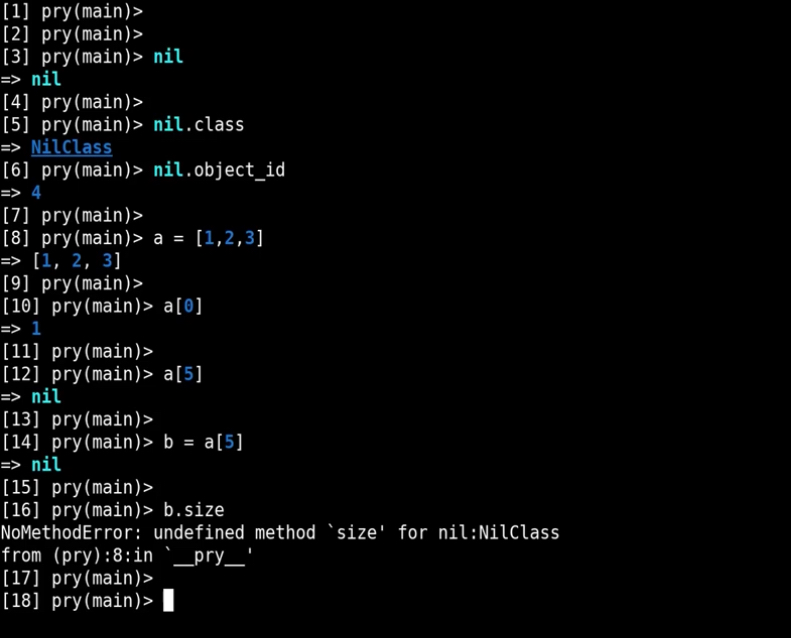In this exploration, the focus is on a specific kind of variable known as a constant, characterized by its capital letter at the beginning. Unlike regular variables, constants are typically defined outside of methods, with metaprogramming being the exception to this rule. Constants serve the purpose of holding values that are intended to remain unchanged throughout the program’s execution. However, Ruby’s design doesn’t enforce the immutability of these constants, allowing for their modification despite the original intent.
Understanding Constants in Ruby
Delving into constants reveals their straightforward declaration process, where the only requirement is the capitalization of the initial letter. Examples of valid constants include `ABC = 1`, `Goo = 2`, and `Foo = 3`. It’s noteworthy that attempting to define constants within methods results in a “dynamic constant assignment” error, emphasizing the practice of placing constants at the class’s top for clarity and visibility. For instance, in a class named `RubyBlog`, constants such as `URL = “rubyguides.com”` and `AUTHOR = “Jesus Castello”` can be easily accessed both inside and outside the class, illustrating their scope and accessibility.
Common Pitfalls with Constants
Expanding on the critical issues associated with constants in Ruby, it’s essential to delve deeper into the “uninitialized constant Foo (NameError)” error and the mutable nature of constants. This error not only highlights a gap in the code, often due to a missing requirement or a misspelling, but also serves as a reminder of the conventions Ruby employs, treating classes as constants. Such an understanding is pivotal for developers, especially when navigating Ruby’s dynamic environment where classes and modules play significant roles.
The ability to reassign constants, despite their name suggesting immutability, introduces a layer of flexibility in Ruby that can be both a boon and a bane. While it allows developers to update values as needed, it also poses the risk of inadvertently altering values that should remain constant. The practice of freezing objects, thereby making them immutable, is a strategic response to this challenge, ensuring that certain values remain unchanged throughout the application’s lifecycle.
Here is a table summarizing the key points regarding the “uninitialized constant Foo (NameError)” error and the mutable nature of constants:
| Aspect | Detail |
|---|---|
| Error Type | “uninitialized constant Foo (NameError)” |
| Common Causes | Missing file/gem requirements, typographical errors |
| Underlying Ruby Principle | Classes treated as constants due to uppercase naming convention |
| Constants Mutability | Constants can be reassigned, leading to potential warnings |
| Mitigation Strategy | Use of .freeze method on objects to prevent modifications |
Understanding these facets of constants in Ruby is crucial for developers seeking to write robust, error-free code. The dual nature of constants, as both mutable and immutable under different circumstances, underscores the need for vigilance and adherence to best practices in Ruby programming.
Advanced Usage of Constants
Ruby’s provision of methods for managing constants significantly enhances the language’s flexibility and dynamism. These methods not only facilitate the basic management of constants but also open up advanced avenues for metaprogramming. By allowing developers to dynamically list, access, set, and even remove constants programmatically, Ruby supports a level of code manipulation that can adapt to complex scenarios and requirements. However, this power comes with the responsibility to ensure security, particularly when inputs are sourced from users, to prevent malicious exploitation.
Here’s a list highlighting the key methods and their purposes:
- constants: Lists all the constants defined within a module or class, returning them as an array of symbols;
- const_get: Retrieves the value associated with a given constant name, accepting either a symbol or a string;
- const_set: Allows for the setting of a constant’s value within a class or module, requiring the constant’s name as a symbol and the value to be assigned;
- const_missing: Acts similarly to `method_missing` but for constants, providing a way to handle references to undefined constants dynamically;
- const_defined?: Checks whether a specified constant has been defined, offering a boolean response to confirm its existence;
- remove_const: Removes a defined constant from the class or module, useful for cleaning up or dynamically altering the code’s structure;
- private_constant: Marks a constant as private, restricting its accessibility from outside the class or module, thus controlling the scope of constant visibility.
These methods empower Ruby developers to interact with constants in sophisticated ways, enabling dynamic definitions and alterations that can respond to runtime conditions. Nonetheless, the potential for code injection or other security vulnerabilities when using these capabilities, especially in web applications, necessitates a cautious approach to their implementation.
The Scope and Inheritance of Constants
Ruby’s constant scope extends to allowing access in child classes and nested modules or classes, with inheritance and module mixing further demonstrating the versatile visibility of constants. However, certain nuances, such as the distinction between including and extending modules or the context in which constants are accessed, can impact their availability and should be carefully considered to avoid errors.
This exploration underscores the nuanced behavior of constants in Ruby, from their declaration and intended immutability to their scope and potential for dynamic manipulation. Understanding these aspects is crucial for effective Ruby programming, ensuring that constants serve their purpose as stable, reliable values within a codebase.
To Wrap Up
In conclusion, the concept of constants in Ruby presents a unique blend of simplicity and complexity. While the basic premise of a constant—a value meant to remain unchanged—is straightforward, the nuances of their declaration, scope, and potential for modification introduce a depth that requires a thorough understanding. This exploration has highlighted several key aspects of working with constants in Ruby:
- Declaration and Visibility: Constants are easily declared with an uppercase initial letter and are best placed outside methods to ensure clear visibility and avoid errors. Their scope extends to being accessible within class methods and even outside the class, making them highly versatile;
- Common Errors and Solutions: The “uninitialized constant” error is a common stumbling block that often points to missing requirements or typographical errors. Understanding that Ruby classes themselves are constants sheds light on the importance of accurate naming and file management;
- Mutable Nature of Constants: Despite their name, Ruby constants can be reassigned, leading to warnings. This mutable characteristic underscores the importance of careful management and, where immutability is essential, the use of frozen objects to prevent changes;
- Advanced Interaction: Ruby provides a suite of methods for interacting with constants, from listing and accessing to modifying and restricting visibility. These tools open up possibilities for dynamic and metaprogramming techniques, though they also necessitate a cautious approach to security, particularly with user-generated inputs;
- Scope and Inheritance Considerations: The scope of constants extends to child classes and nested modules, with specific behaviors around inheritance and mixing in modules. Understanding these behaviors is crucial for leveraging the full potential of constants in structured and modular Ruby applications.
In mastering the use of constants, Ruby developers gain a powerful tool for creating clear, maintainable, and effective code. Constants not only promote the use of immutable values where appropriate but also facilitate a structured approach to defining and accessing significant data throughout an application. As with many features of Ruby, the power of constants lies in their flexibility and the responsibility of the developer to use them wisely, balancing ease of use with the potential complexity of their behavior within the broader context of a Ruby application.


